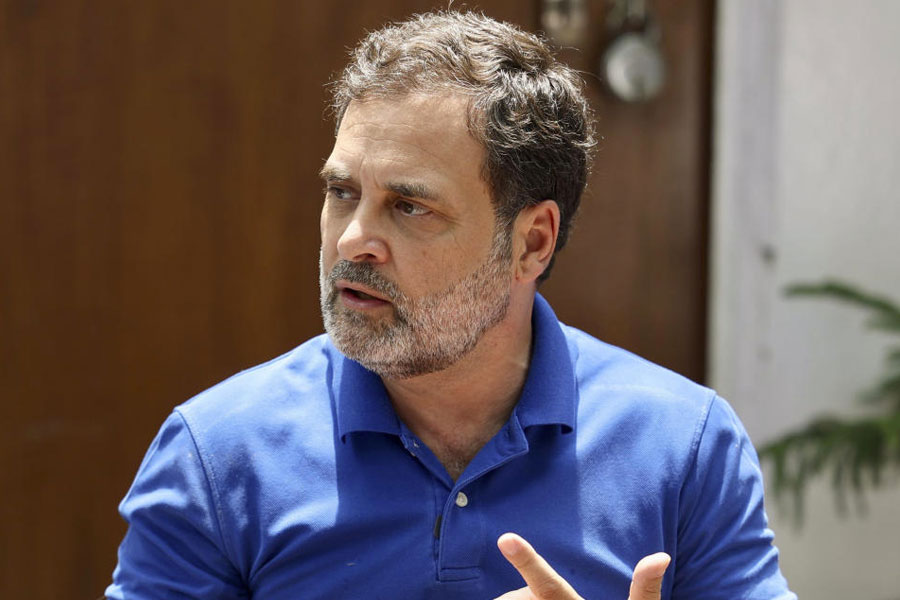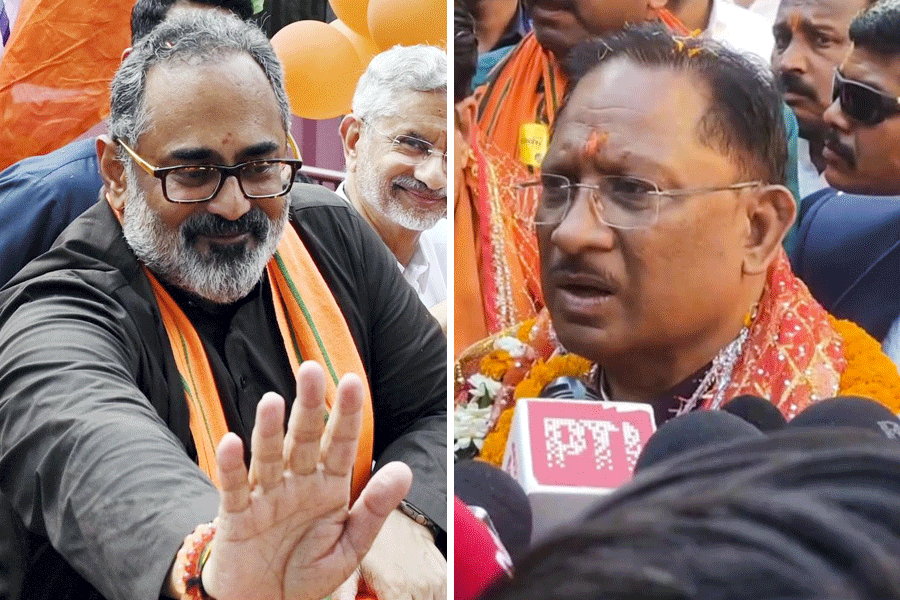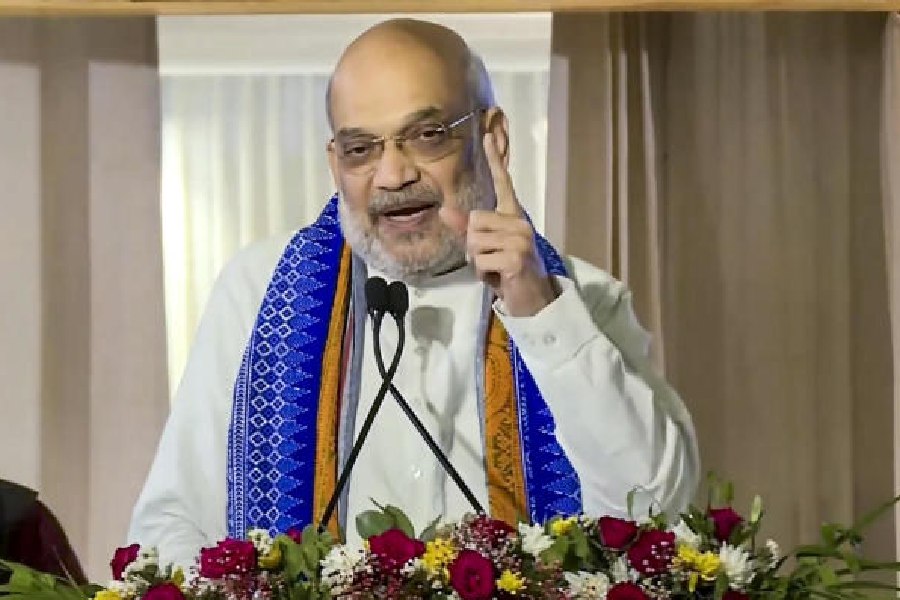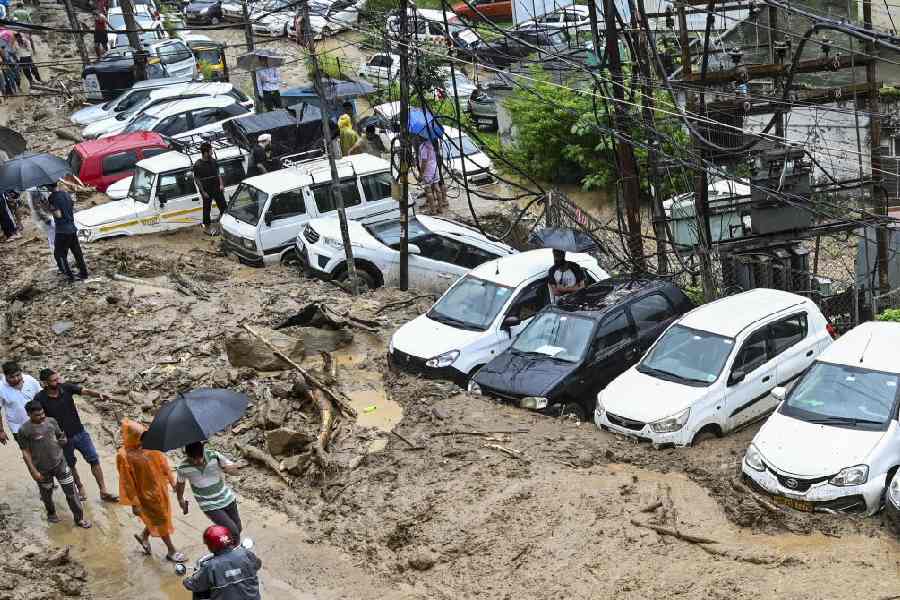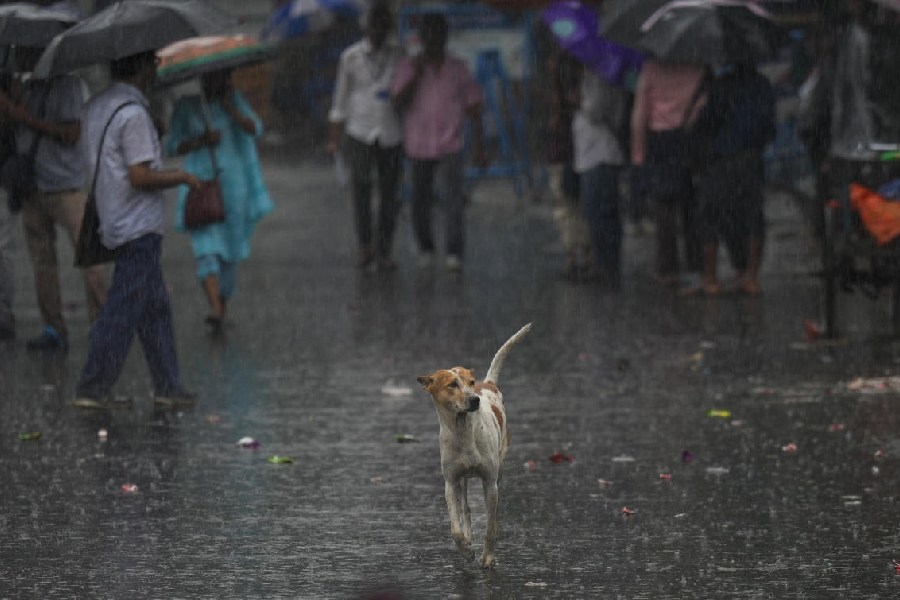
Guwahati, June 22: The ambience along the 3.2km road to Kamakhya temple here resembled that of the route to the Vaishno Devi temple in Jammu and Kashmir as devotees climbed the Nilachal hill on the first day of the annual Ambubachi mela today.
"We waited for more than an hour for a bus. But everybody here asked us to travel on foot. It's a little tiring but as there are fewer buses this time, we had to climb the road. If devotees can walk the 13km road from Katra to reach Vaishno Devi, we can walk 3km here," Mahesh Sharma, a devotee from Kishanganj in Bihar, told The Telegraph , as five members of his family rested in a shed, about 1km from Kamakhya temple.

The sounds of drums, cymbals and conch reverberated on the temple premises as the doors were closed to devotees.
"The temple was closed to devotees at 9am but the doors closed at 1.15pm after performing the rituals," said Bhupesh Kumar Sarma, the secretary of Doloi Samaj, a society of priests who perform the rituals in the temple.
Sarma said more than one lakh devotees and tourists visited the temple today and the number could go up tomorrow.
The temple doors are kept closed during the mela as goddess Kamakhya is believed to undergo her annual menstrual cycle during these four days.
The doors will reopen on Monday morning after bathing the deity and performing puja.
Assam government officials said although bus services were provided, devotees were encouraged to take the road on foot and the three stone staircases as they were trying to follow the Vaishno Devi model. However, it was ensured that the elderly, physically challenged, women and children were provided vehicles.
Assam tourism minister Himanta Biswa Sarma had yesterday said that efforts were on to follow the Vaishno Devi model by constructing another road to reach Kamakhya from Pandu, on the western side of the temple.
"From battery-operated cars to roads, something new is done in Vaishno Devi regularly. The temple trust there has constructed a super-specialty hospital and a university. We can construct a better hospital here, although it may not be as big as that one. We will also improve the ancient staircase known as mekhela ujawa path so that people can climb up," he said.
According to archaeologists, the origin of Kamakhya temple, one of the 51 shaktipeeths in the country, dates back to the eighth and ninth centuries.
Religious literature says the original temple was built by Kamdev with the help of Vishwakarma. It was demolished in the 15th century. The ruins were discovered by Koch king Viswasingha and his son Naranarayan constructed it with the help of Koch general Chilarai. It was rebuilt during the Ahom dynasty rule.
Other ancient temples of Kali, Tara, Bhuvaneswari, Bagalamukhi, Chhinnamasta, Bhairavi and Dhumavati and five temples of Lord Shiva, namely Kameswar, Siddheswar, Kedareswar, Amratokeswar, Aghora and Kautilinga, are also situated on Nilachal hill. The temples are believed to be of astrological significance.
More than 10 lakh devotees visited the temple last year. The organisers are expecting more visitors this year.
Many VIPs, including BJP chief Amit Shah, chief ministers of nine states, ministers, MPs and religious leaders have been invited for the first time to this mela.
This year, the tourism department has launched a tour package, comprising tents on the Nilachal hill and a river cruise on the Brahmaputra during the mela, as part of its plan to put Kamakhya on the spiritual tourism map of the country.


